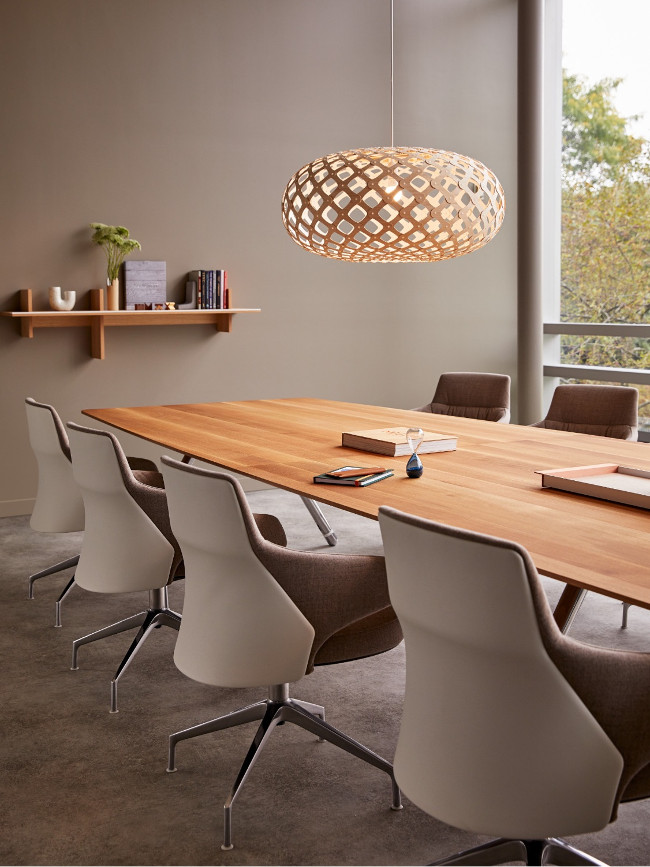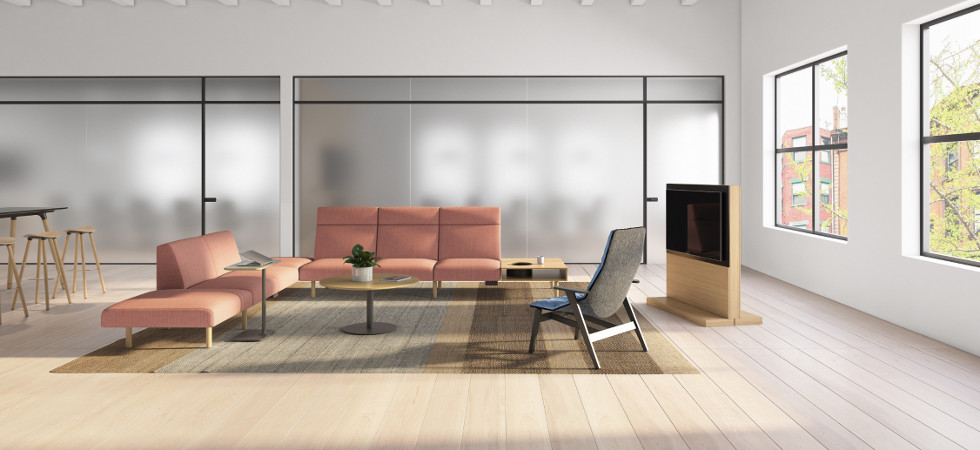Interior office design is in a phase of transformation. The revolution is driven by technological innovations and a mountain of evidence that reveals the pitfalls of open-plan offices.
Many office designs cause distractions and have a negative impact on the physical and mental health of employees. Consequently, businesses are realising that the health and well-being of their employees is the way forward.
As a result, interior designers are finding innovative ways to design office space that are people-centred yet look to promote productivity and job satisfaction. Five of the latest trends are detailed below.

Adaptable workstations
With growing numbers of self-employed business owners, together with the advent of hot-desking and telecommuting, co-working space has flourished in recent years.
This initiative has since spilt over into traditional offices. A common theme we are seeing among leading businesses right now is the elimination of dedicated workstations in favour of mobility. Smart offices are even programmed to find you a desk in relation to your schedule.
Wireless technologies and cloud computing make it possible for employees to move around the office easily. This often means using the same desk space as multiple colleagues.
As a result, desks and chairs need to be adjustable and fully-equipped for employees to perform their work, and recharging cables and hubs are required together with access to stationery. Sit-stand adjustable chairs and adjustable standing desks are also becoming increasingly popular with millennials, and let’s not forget about businesses’ efforts to adapt their premises for employees of all physical abilities, ranging from wheelchair access to having disabled toilets with compliant restroom layout designs.

Lounge areas
Now that CEOs recognise the importance of allowing employees to take a break and re-energise, relaxation areas are becoming increasingly common in modern office interiors.
Couches, lounge chairs, bean bags and pillows create a “living room like” feel and segregates a section of the office from the “work environment.” Lounge areas enable people from different departments to get to know one another and have been found to foster integration and creativity.
Wellbeing facilities
Absenteeism from the workplace due to stress-related illnesses is estimated to cost the global economy some US$1 trillion in lost productivity. To combat the issue of lost sick days, more businesses are looking for interior design solutions that cater towards the health and wellbeing of employees.
Some large companies have built in-house gyms where staff can go to destress. Others have introduced recreational areas, meditation rooms or outdoor facilities where people can be among nature.
Returning to nature
The idea of biophilic office designs is gaining momentum. Research has shown that having numerous plants and bushes around the office improves air-quality.
Moreover, introducing various elements of the natural world into the office design helps the mind to relax, reduces stress, improves cognitive functions, enhances mood and promotes creativity.
However, a biophilic office design involves more than positioned a handful of plants around the office. Consider using natural stone, wood, water features and even sand.

Agile offices
Open-plan offices didn’t work out as expected. The open office was supposed to encourage collaboration, foster creativity and improve production.
However, research shows employees in open-plan offices have less face-to-face interaction because there are too many distractions and people cannot fully focus. It can take another 20 minutes for individuals to regain focus after a lapse.
The concept of agile office has risen from the failure of open-plan offices. Whilst the original intention has not changed, interior designers have adapted the layout to encourage businesses to use the space differently.
Dedicated workstations for performing specific tasks have proven to stimulate employees and improve productivity. Modern office designs incorporate meeting places, collaborative spaces and quiet rooms where individuals can find the peace and quiet they need to focus.
If your office design is open plan, your business could be producing less output and you could be putting the health and wellbeing of your staff in jeopardy. Maybe it’s time to consider an upgrade.
Image credit at the very top of the article: coalesse.com






















